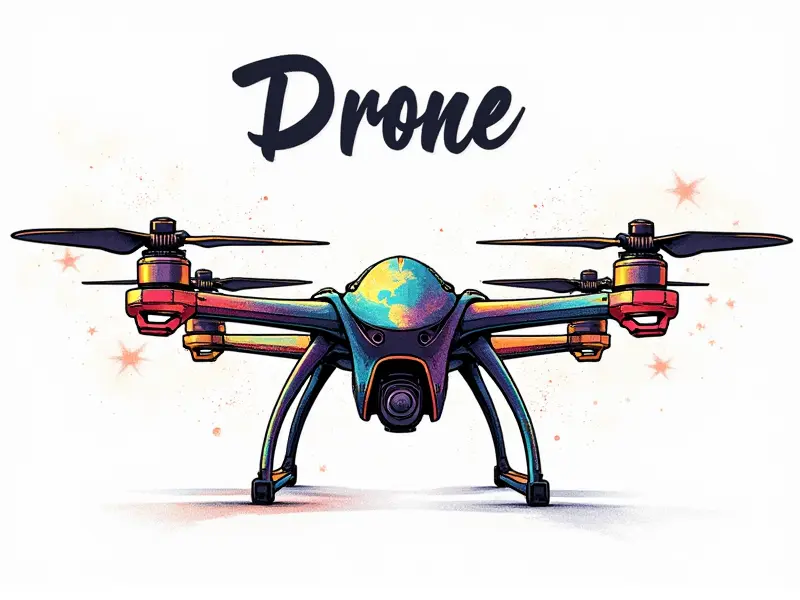Drone autopilot repair needed?

If you're a drone enthusiast or professional pilot, the last thing you want is for your autopilot system to malfunction. Whether it's due to wear and tear, software glitches, or hardware issues, understanding how to diagnose and repair these problems can save you time and money while keeping your drone operational.
Troubleshooting Tips for Drone Autopilot Problems
When your drone’s autopilot system starts acting up, the first step is to identify the problem. Here are some common issues and their potential causes:
- Flight Control Issues: If your drone fails to maintain stable flight or follows commands inaccurately, it could be due to sensor calibration errors or software bugs.
- Battery Problems: A weak battery can cause erratic behavior in the autopilot system. Ensure that all batteries are fully charged and functioning properly.
- Communication Errors: If your drone loses connection with its remote control, it might be due to interference from other electronic devices or a faulty telemetry link.
How to Diagnose and Repair Drone Autopilot Errors
To effectively diagnose and repair autopilot errors, follow these steps:
- Check for Firmware Updates: Ensure that your drone’s firmware is up-to-date. Outdated software can cause a range of issues.
- Inspect Hardware Components: Look for signs of physical damage or wear and tear in the autopilot board, sensors, and other critical components.
- Run Diagnostic Tests: Most modern drones come with built-in diagnostic tools. Use these to identify specific issues that need addressing.
DIY Fixes for Drone Autopilot Issues
If you're comfortable working on your drone, there are several DIY fixes you can try before seeking professional help:
- Calibrate Sensors: Use the calibration tool in your drone’s software to recalibrate sensors like GPS and barometer.
- Clean Contacts: Dust and debris can interfere with electrical contacts. Clean these areas carefully using compressed air or a soft brush.
- Replace Faulty Components: If you identify specific components that are malfunctioning, consider replacing them with compatible parts from reputable suppliers.
Common Causes of Drone Autopilot Malfunction
The autopilot system in your drone can fail due to various reasons. Here are some common causes:
- Software Bugs: Errors in the firmware or flight control software can lead to erratic behavior.
- Sensor Malfunction: Faulty sensors like GPS, barometer, and compass can cause navigation issues.
- Battery Issues: Weak batteries or improper charging can affect performance.
Essential Steps to Repairing a Drone's Autopilot
To repair your drone’s autopilot system effectively, follow these essential steps:
- Identify the Problem: Use diagnostic tools and manual checks to pinpoint the issue.
- Gather Necessary Tools: Ensure you have all required tools like screwdrivers, multimeters, and replacement parts.
- Disassemble Carefully: Take apart your drone carefully to avoid damaging other components.
- Replace Faulty Parts: Swap out any faulty sensors or boards with new ones from a trusted supplier.
Budget-Friendly Solutions for Drone Autopilot Repairs
If you're looking to save money on repairs, consider these budget-friendly solutions:
- DIY Repair Kits: Purchase repair kits that include commonly needed parts like sensors and circuit boards.
- Second-Hand Components: Look for second-hand components from reputable sellers to save on costs.
- Online Forums: Join online forums where experienced drone pilots share tips and solutions for common issues.
Signs Your Drone's Autopilot Needs Immediate Attention
Sometimes, it’s clear that your autopilot system needs urgent attention. Here are signs to watch out for:
- Lack of Control: If you lose control over the drone mid-flight.
- Unstable Flight Patterns: Erratic flight behavior, such as sudden drops or erratic turns.
- Communication Loss: Frequent disconnections between your remote and the drone.
Maximizing Autopilot Lifespan in RC Quadcopters
To extend the lifespan of your autopilot system, follow these preventive measures:
- Regular Maintenance: Perform routine maintenance checks to catch issues early.
- Proper Storage: Store your drone in a dry, dust-free environment when not in use.
- Software Updates: Keep firmware and software updated to benefit from the latest bug fixes and improvements.
Preventive Measures to Extend Drone Autopilot Life
In addition to regular maintenance, here are some preventive measures to extend your autopilot’s lifespan:
- Protect from Environmental Factors: Shield the drone and its components from extreme temperatures and moisture.
- Use Quality Batteries: Invest in high-quality batteries that provide consistent power without degrading quickly.
- Avoid Overuse: Limit flight time to prevent excessive wear on electronic components.
When to Seek Professional Help for Drone Autopilot Repair
While DIY fixes can be effective, there are times when professional help is necessary:
- Complex Issues: If the problem seems too complex or involves critical components.
- Lack of Experience: If you’re not confident in your ability to diagnose and repair issues safely.
- No Improvement After DIY Fixes: When your attempts at fixing the issue have failed.
Cost of Repairs vs. Replacement: Drone Autopilot
When deciding whether to repair or replace an autopilot system, consider both costs and long-term benefits:
- Repair Costs: Evaluate the cost of parts and labor for repairs.
- Replacement Costs: Compare this with the cost of a new autopilot system.
- Lifetime Value: Consider the expected lifespan and performance benefits of each option.
In conclusion, maintaining your drone’s autopilot system is crucial for ensuring safe and reliable operation. By following preventive measures and addressing issues promptly, you can extend the life of your drone and minimize downtime due to repairs or replacements.

